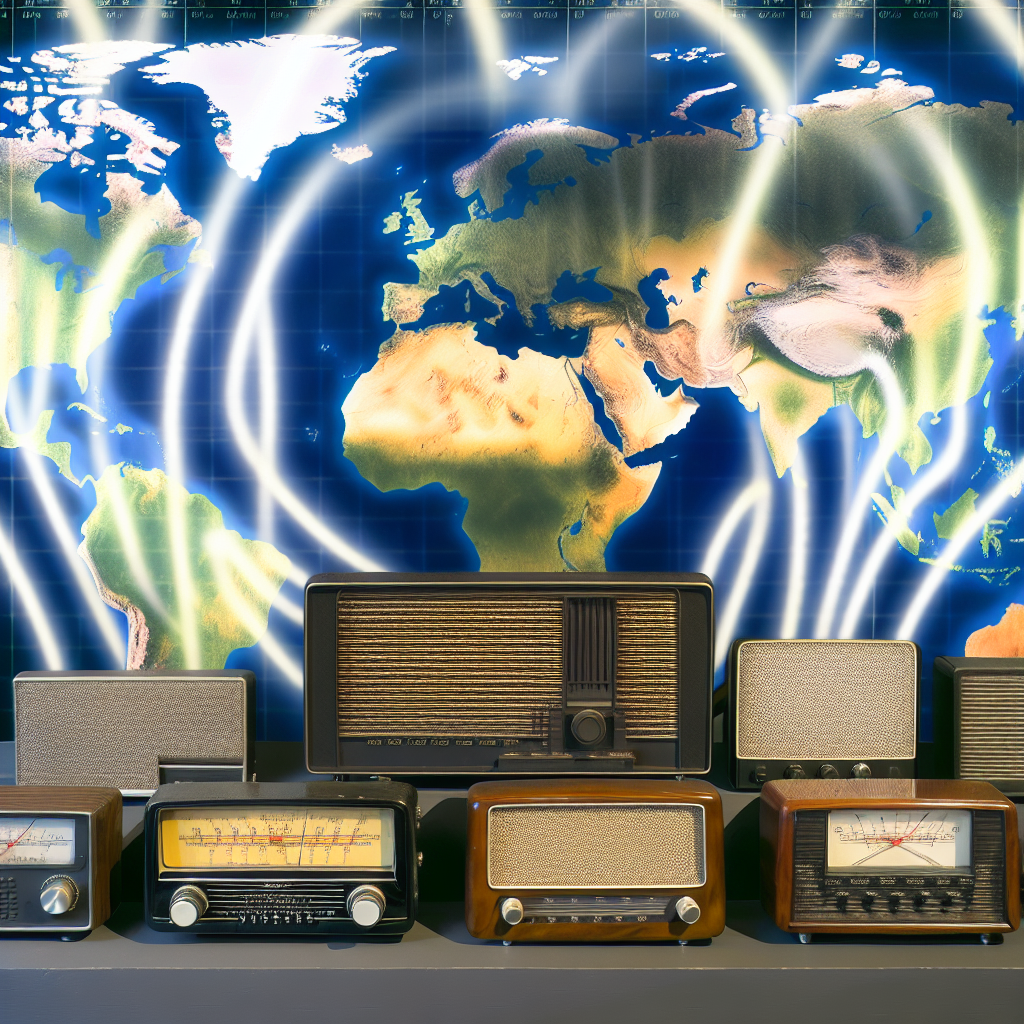Shortwave radio offers a window into global communication, spanning international news broadcasts and amateur radio bands. This article explores the multifaceted aspects of shortwave radio, from signal propagation to emergency communication, and the enduring hobby of DXing.
The Basics of Shortwave Radio and its Global Reach
Shortwave radio operates in the high-frequency (HF) bands, using radio frequencies from 3 to 30 MHz, allowing broadcasts to traverse vast distances by bouncing off the ionosphere. This remarkable ability to reach remote areas is pivotal for international news radio, which connects listeners to global events and cultures. With a variety of modulation techniques, such as AM broadcast, shortwave radio can deliver rich audio content suitable for audiences across diverse geographical landscapes. This characteristic makes it an invaluable tool for survival communication, emergency broadcasts, and maintaining information flow in rural and isolated regions, showcasing its enduring significance in today’s interconnected world.
Understanding Radio Propagation and Antenna Tuning
Understanding radio propagation is essential for maximizing the effectiveness of shortwave radio communication. It involves the study of how radio waves travel through the atmosphere and interact with various elements, influencing their reach and quality. Factors such as frequency, time of day, and atmospheric conditions greatly affect signal reception.
For amateur radio operators and shortwave enthusiasts, mastering antenna tuning is crucial. Techniques like adjusting the length and configuration of antennas can significantly enhance signal strength and clarity. Whether using vintage radios like the Grundig, modern digital shortwave receivers, or portable options like the Tecsun PL-880, optimized equipment can lead to successful contacts across borders.
The Role of Amateur Radio Bands in Emergency Communication
Amateur radio bands play a pivotal role in emergency communication, particularly in rural and disaster-stricken areas. When conventional communication systems face failure, ham radio operators step in, leveraging **HF radio** frequencies to establish vital connections. The ability to transmit over long distances using portable shortwave radios enhanced by effective antenna tuning ensures that messages can be relayed even amid adverse conditions. Moreover, these operators are trained in **disaster preparedness**, using their skills to share crucial information about ongoing circumstances and rescue efforts. During emergencies, the resilience of amateur radio becomes evident, fostering community support and resilience through reliable communication channels.
Modern and Vintage Radios: A Look at Technology and Nostalgia
Shortwave radios, particularly vintage models, hold a nostalgic charm that resonates deeply with both collectors and survival radio enthusiasts. Analog shortwave radios, such as those from brands like Grundig, evoke a sense of tradition in the way they connect listeners to global broadcasts amid a plethora of radio frequency bands. In contrast, modern digital shortwave receivers and SDR shortwave technology offer enhanced tuning capabilities and advanced signal reception. Yet, the allure of vintage radios often lies in their simplicity and unique sound quality. Both types play vital roles in today’s radio hobby, fostering community among enthusiasts and providing crucial emergency communication options when other channels falter.
DXing and the Spirit of Radio Hobbyists
DXing is a thrilling pursuit for radio hobbyists, who seek to tune into distant stations and experience global broadcasting in real-time. Using portable shortwave radios, enthusiasts often venture into the field, capturing signals from far-off lands. Models like the **Tecsun PL-880** and **Sony ICF-SW7600** are favorites due to their excellent sensitivity and selectivity, making it easier to pick up faint signals from obscure regions. The joy of logging new stations and exchanging QSL cards fosters a strong community among DXers, cultivating a spirit of camaraderie and shared exploration across the airwaves, while honing skills in antenna tuning and signal reception.
A Sweet Ending
The world of shortwave radio is as diverse as it is intriguing, offering a fascinating avenue for both hobbyists and professionals to connect globally and prepare for emergencies.

Leave a Reply
You must be logged in to post a comment.